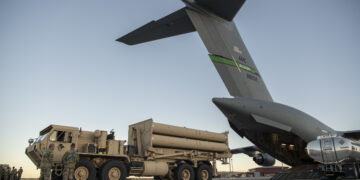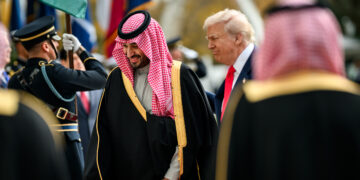At the time it was announced, in March 2023, the China-mediated deal between Iran and Saudi Arabia was widely seen as a sign of Beijing’s arrival in Middle East power politics. Although the Biden administration denied that China’s role in brokering the agreement—which reestablished diplomatic relations between Riyadh and Tehran—reflected declining U.S. influence, Washington’s actions since then paint a different picture. Over the last few months, the United States has deployed additional military resources in the region, increased patrols and joint exercises around the Strait of Hormuz, and signaled that it would push forward arms deals with regional partners such as Saudi Arabia and the United Arab Emirates (UAE) and expand training with Egypt, Kuwait, and others—all in an apparent attempt to reassure Arab partners of its commitment to Middle East security.
But these moves are unlikely to shore up U.S. influence. The pivot of Arab powers toward Beijing is not a result of Washington’s declining military presence. These states are well aware of Washington’s military investments in the Middle East—though they increasingly doubt its willingness to deploy those capabilities on their behalf. Rather, they are engaging China in areas—such as infrastructure and technology—where they perceive that the United States is less able or willing to help them. They are also seeking to acquire certain military systems, such as advanced drones, that the United States has wisely kept off-limits. Moreover, China’s foreign policy tends to be friendlier to authoritarian regimes like their own, and Beijing has managed to stay equidistant from the region’s competing powers, allowing China to portray itself as an unbiased mediator.
Given these trends, the United States needs a new approach to the region. It should accept the more positive aspects of China’s growing presence in the Middle East and encourage—rather than try to contain—Beijing’s contributions to regional development and stability. Washington will also need to adopt a more targeted response to specific Chinese actions that harm U.S. interests.
More on Middle East

By Benjamin Friedman and Rosemary Kelanic
December 5, 2025

By Geoff LaMear
December 5, 2025

November 19, 2025

November 19, 2025
Events on Middle East






